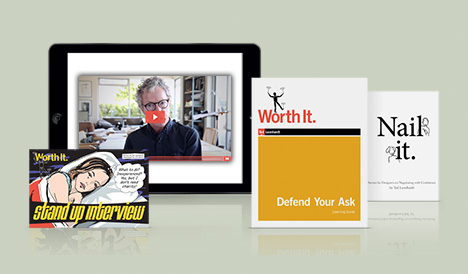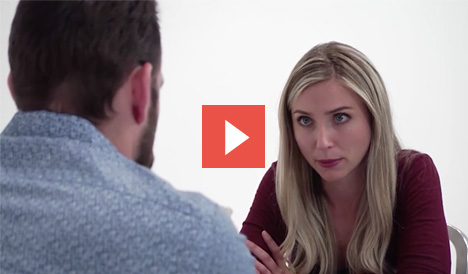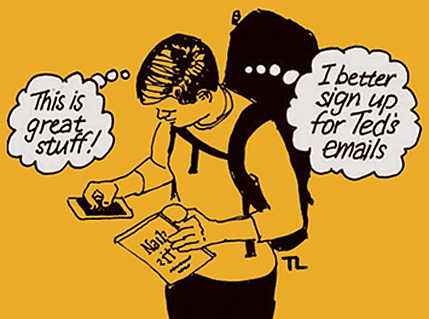Public Speaking 201: Reading the Room

Maybe you’re pitching new business to a client or giving a presentation to your own team. If you’re smart and even reasonably creative, your brain will be working overtime on how the meeting is progressing and how people are reacting.
In other words, you’re “reading the room:” Did that guy just look at his watch for the second time? The woman on the left, is she doodling? And you’ll adjust according to your perceptions of what’s going on around you, perhaps by skipping a couple of slides to shave off some time, or suddenly raising your voice to grab everyone’s attention.
Most of us learned these basic room-reading skills in Business 101 or else just picked them up the hard way, trial and error. And for most of us, it stops there — our observational techniques and our responses are mostly intuitive. But that can be limiting, or even risky. The key is to make sure what you’re observing is as close to what’s really going on as possible, and then adjust your approach if it’s missing the mark with your audience. In other words, you can’t just read the room — you’ve got to inhabit it. Here’s how.
How to Check Your Perceptions
Your perceptions of what’s going on around you are important, but they’re not the full story — and can even hold you back from grasping it. While you’re busy checking out what everybody else is doing, you project your own experiences (replete with all your personal and cultural biases) onto your perceptions, which could be dead wrong.
Sure, when someone looks at her watch during your presentation, she might be drowning in boredom. But what if she’s loving your talk and can’t wait for Q&A time? I’ve just never been convinced that anyone can agree on what crossing arms or any other physical motions mean for everyone across the board.
When someone looks at her watch…she might be drowning in boredom. But what if she’s loving your talk and can’t wait for Q&A time?
So instead of thinking you have it all figured out, try not to just register your own perceptions, but to then take those and check them against the people around you. You might pause in your speaking and change your position: sit if you’ve been standing, step from behind a podium, or move to their side of the table.
Then candidly speak to what you’ve been perceiving. Use “I” statements and ask open-ended questions. And even if you’re peeved at (what you perceive as) inattentive behavior, speak without blaming, shaming, or complaining. Someone could have quarreled with their partner the morning before coming to your presentation and may still be mentally miles away; they might be worried about a sick kid.
If you’ve noticed watch-checkers, you might say, “I see we’re halfway through our scheduled time and I’m concerned I might not be addressing our topics usefully. What can I cover in the remaining minutes that would be most helpful?”
If you’re getting the sense that you might have bypassed an important point, own your possible mistake by saying, “I’ve been assuming ______. Is that correct, or is there something I’m missing?” Or verbally shift the attention to your audience: “I’ve been so focused on what I wanted to tell you that I didn’t ask about your experience.” You can even address the room more generally by saying, “I’d like to take a pause and check in with how everyone’s doing.”
Changing the course of a meeting and inviting others to add their input can be frightening. It might feel like your objectives will get diluted or derailed. It can feel like you’re throwing away your carefully prepared presentation and the hours you practiced it.
And you might be right — but the risk is usually worth it. In meetings when I’ve interjected a sudden halt and checked in with my audience, I’ve uncovered previously unspoken needs and established a new level of trust with those in the room.
Quick Ways to Regain Your Footing
Sometimes it’s hard getting your bearings back after reading a room and having to adjust course. It can be nerve-wracking. So to stay present, you’ve got to keep yourself calm. Here are a few quick physical tweaks you can try making:
Breathe with your belly. If possible, breathe from your diaphragm so your belly inflates, not just your chest. This is only a slight difference — no one observing you will notice, but it does help calm you down. You can practice this technique alone by lying on the floor with your hands on your midsection and feeling it rise and fall with your breath.
Smile with your eyes. Yes, smiling with your eyes is a thing. Forcing only your mouth to smile can give you a death-mask look — that’s no good. Instead, feel how the area around your eyes pulls in when you smile genuinely. That’s what a “radiant smile” feels like.
When I’ve…checked in with my audience, I’ve uncovered previously unspoken needs and established a new level of trust.
Focus on others. Unless you’re really good at managing your emotions, just noticing that you’re anxious can make you more anxious. It’s a vicious circle. When you feel your heart rate going up and your palms getting sweaty, try turning your attention toward others. Go back to your original perceptions on reading the room and use them to get your mind off yourself. That can calm you down and get you ready to make a more relaxed — and meaningful — connection with your audience.
Preparation and practice are also good calmers, but you can’t necessarily draw on them in the moment. But what you can do is bring along plenty of artifacts like storyboards or product samples in case you need to change gears in the direction of doing something. By the same token, though, be ready to set everything aside and pay deep attention. The goal is to think less, do less, and experience more. Will it work every time? No. Will it work over time? Eventually, yes.
This article originally appeared in Fast Company.




